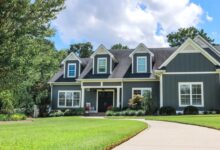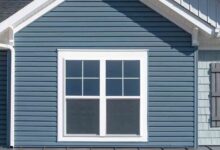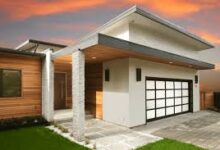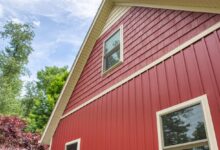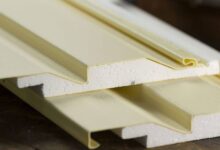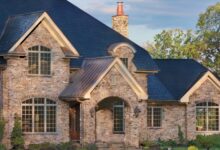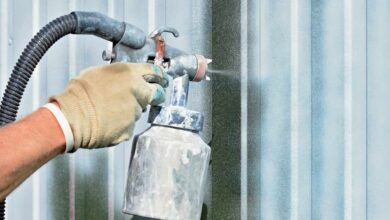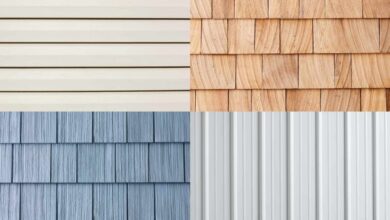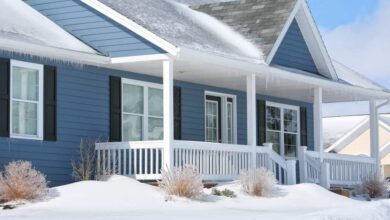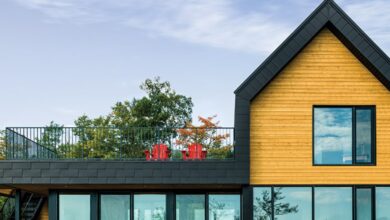Metal Siding for Modern Homes
Metal siding has become a go-to solution for homeowners looking to modernize their home’s exterior while benefiting from the material’s durability and aesthetic appeal. As trends in home design move towards more sleek, contemporary lines, metal siding has surged in popularity. Its diverse range of styles, long lifespan, and low maintenance make it a standout material for both new constructions and renovation projects. Whether you’re considering updating your home’s exterior or building from scratch, this guide will walk you through everything you need to know about metal siding for modern homes. Over the years, the variety of materials available for siding has grown, allowing homeowners to choose products that align with their design preferences, budget, and environmental goals. In this comprehensive guide, we’ll explore the various materials available for modern home siding, how they contribute to home performance, and the latest trends in siding technology and design.
Why Choose Metal Siding for Modern Homes?
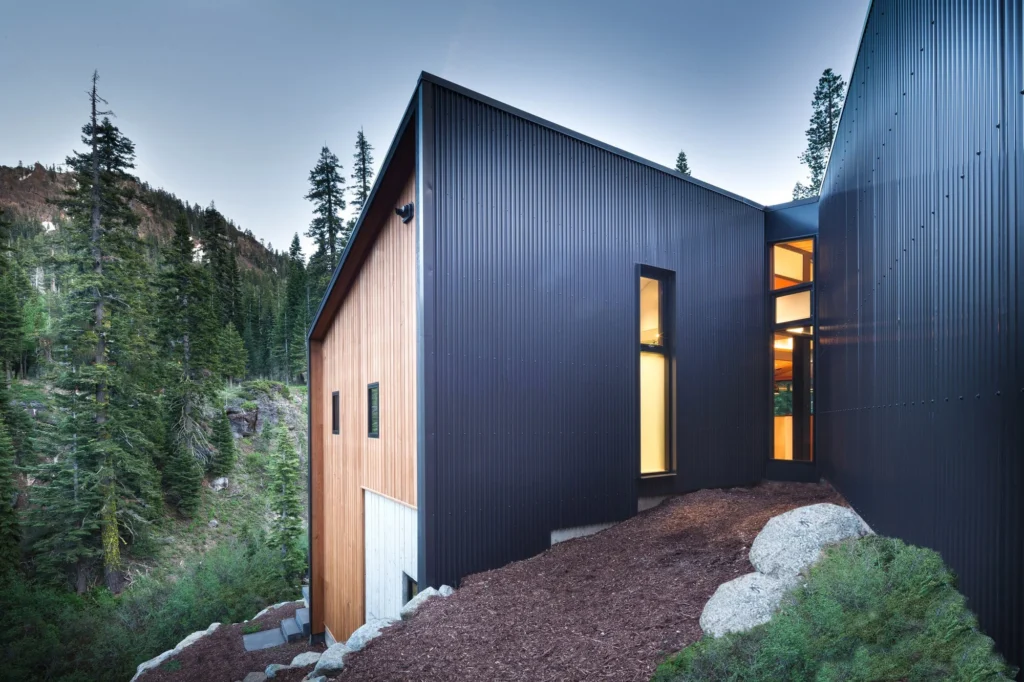
When deciding on the right siding for a modern home, there are several compelling reasons why metal siding stands out as a superior option. Let’s explore these reasons in more detail.
Durability and Longevity
One of the key reasons homeowners opt for metal siding is its exceptional durability. Unlike traditional materials like wood or vinyl, metal siding can last for decades without showing significant wear. Steel and aluminum, two of the most common metal siding materials, are resistant to common issues like rotting, warping, and pest infestations.
Wood, for example, may require regular treatments to prevent rot and insect damage, while vinyl siding can crack or fade under extreme temperatures. On the other hand, metal siding, especially steel, is tough enough to withstand harsh weather conditions—such as heavy rain, strong winds, and snowstorms. Many metal siding options are designed to resist corrosion, rust, and mildew, ensuring that your home’s exterior will continue to look pristine and last for many years without needing extensive repairs.
For those living in areas that experience extreme weather conditions, metal siding is one of the best long-term investments you can make.
Energy Efficiency
Energy efficiency is a growing priority for homeowners, especially those who are conscious of their environmental footprint and rising utility costs. Metal siding can help enhance your home’s energy efficiency in several ways. Firstly, metal, particularly aluminum and steel, has reflective properties that help reduce heat absorption. This means that metal siding reflects the sun’s rays, keeping your home cooler during hot summer months.
Additionally, metal siding is an excellent barrier against outside elements, offering insulation benefits that help maintain your home’s internal temperature. This can lead to lower heating and cooling costs. When metal siding is installed with proper insulation, it can create a highly energy-efficient system that not only reduces utility bills but also minimizes your overall environmental impact.
Some types of metal siding come with a coating that enhances thermal efficiency. These coatings improve the material’s ability to reflect sunlight, further enhancing its energy-saving potential. For homeowners looking to maximize energy efficiency, pairing metal siding with energy-efficient windows and doors can provide substantial savings over time.
Aesthetic Appeal
Metal siding is versatile and can transform a home’s exterior into a modern, sleek masterpiece. Modern architecture often favors clean lines, industrial aesthetics, and minimalist designs—qualities that metal siding can provide. Whether you choose steel, aluminum, or copper, metal siding offers a sophisticated finish that complements a variety of design themes, from contemporary to rustic.
Many metal siding products come in different textures, profiles, and colors, allowing homeowners to tailor the exterior look of their home. For example, steel siding can mimic the look of traditional wood siding but with enhanced durability. Aluminum can offer a smooth, modern appearance, while copper adds an upscale, unique touch that evolves over time as it develops a beautiful natural patina.
Homeowners can choose from a wide variety of styles such as vertical, horizontal, or corrugated, all of which bring different visual effects. Whether you want a polished, uniform appearance or a more textured, industrial look, metal siding gives you the flexibility to match your home’s design vision.
Types of Metal Siding for Houses
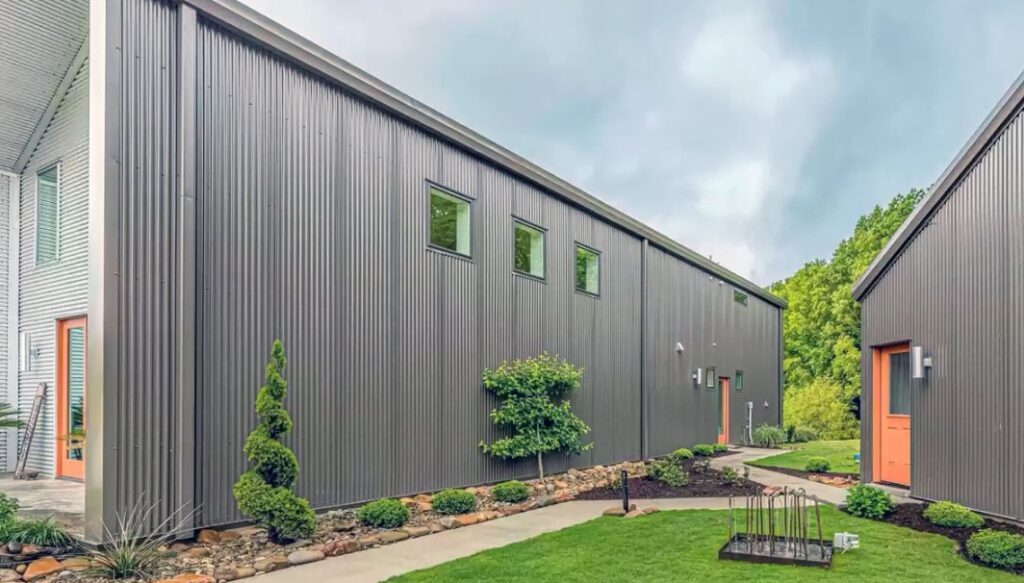
Metal siding is not a one-size-fits-all solution. Depending on your priorities—whether they are durability, aesthetics, or budget—different types of metal siding may suit your needs better. Below, we explore the most common types of metal siding, their features, benefits, and potential downsides.
Steel Siding
Steel siding is a robust and highly durable material, often chosen for its longevity and superior strength. Steel is considered one of the toughest materials available for siding, able to withstand the rigors of harsh climates and extreme weather conditions.
Key Benefits of Steel Siding
Steel siding is highly resistant to impact, meaning it won’t easily dent or damage from things like hail or branches. Additionally, it’s fire-resistant, offering enhanced safety in case of wildfires or accidental fires. Another major advantage is that steel does not warp, rot, or decay over time, unlike wood. As a result, it’s an excellent choice for homeowners who want a low-maintenance option that can withstand the test of time.
Steel siding also resists fading and discoloration, ensuring your home maintains its fresh look for years. Many steel siding products come with a protective coating that further prevents rust and corrosion. This makes it especially well-suited for coastal areas where saltwater can cause rapid corrosion on other materials.
However, one downside is that steel siding can be heavier than other materials, which could impact the installation process. It also tends to be more expensive compared to materials like vinyl or aluminum.
Ideal For
- Homeowners in regions with extreme weather conditions.
- Those looking for long-term investment in a highly durable and low-maintenance material.
Aluminum Siding
Aluminum siding is often considered a more affordable alternative to steel. While it may not be as strong as steel, aluminum still offers excellent resistance to corrosion and rust, especially in coastal or humid climates. It’s a great material for homeowners who need a lighter, more cost-effective option without sacrificing too much on durability.
Aluminum siding is extremely lightweight, making it easier to install. Additionally, aluminum can be painted in a variety of colors, giving homeowners the flexibility to customize their home’s look. Unlike steel, aluminum is less prone to rust, making it a good option for homes near saltwater or high-moisture areas.
Key Benefits of Aluminum Siding
- Lighter weight and easier to install than steel.
- Less expensive upfront, making it a budget-friendly option.
- Highly resistant to corrosion, especially in coastal areas.
- Available in various color options and finishes.
However, aluminum siding can be more prone to denting compared to steel or vinyl. It is also more vulnerable to fading over time, especially if not coated with a protective finish.
Ideal For
- Homeowners on a budget who still want the benefits of metal siding.
- Those in coastal regions where rust is a concern.
Copper Siding
Copper siding is a luxurious and unique option that adds a distinctive look to modern homes. Copper has a high natural resistance to corrosion, which makes it incredibly durable. Over time, copper develops a beautiful patina that adds a unique charm and character to the home’s exterior.
Although copper is more expensive than other metal siding materials, it can be a great investment for homeowners looking for something truly distinctive. The natural aging process of copper ensures that no two homes will look the same, as the patina forms differently depending on the climate.
Key Benefits of Copper Siding
- Extremely durable and resistant to corrosion and rust.
- Develops a unique patina over time, enhancing its aesthetic appeal.
- Low maintenance and long-lasting.
However, copper is one of the most expensive siding options, and its installation can be costly due to the specialized handling required. Copper is also relatively soft, making it more prone to denting compared to steel or aluminum.
Ideal For
- Homeowners looking for a high-end, luxury material.
- Those who appreciate the aging process and want a unique, evolving look.
Top Products for Metal Siding: Detailed Review
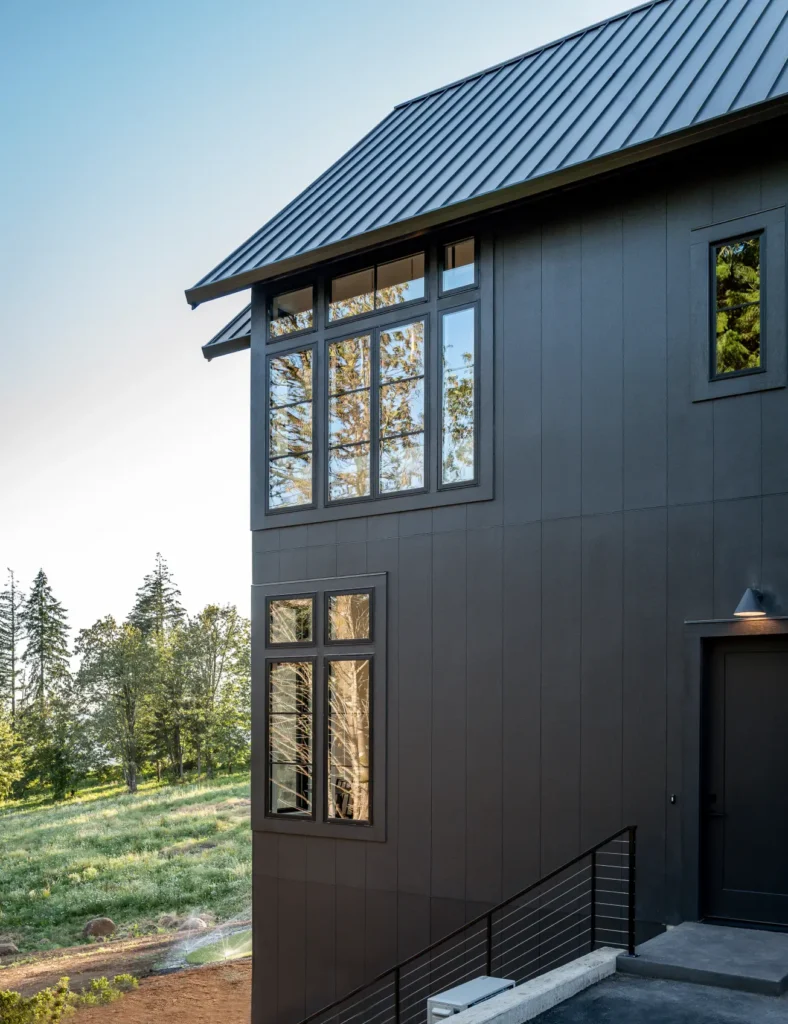
When considering a metal siding product for your home, it’s crucial to understand how different products compare in terms of quality, price, and features. Below are three standout metal siding products to consider:
1. James Hardie HardiePanel® Vertical Siding
James Hardie is a recognized name in the siding industry, and their HardiePanel® vertical siding is a top choice for modern homes. Though not strictly a “metal” in the traditional sense, this fiber-cement panel mimics the look and feel of metal siding while offering superior durability.
- Price: $3 to $5 per square foot
- Material: Fiber cement (designed to replicate metal siding)
- Features: Fire-resistant, weather-resistant, available in various colors
- Pros: Long-lasting, non-combustible, great for fire-prone areas
- Cons: Requires professional installation, higher upfront cost
- Where to Buy: Available at James Hardie’s official site
This product combines the durability of fiber cement with the aesthetic appeal of vertical metal siding, making it a versatile choice for modern homes. While it’s not technically made from metal, the HardiePanel® gives homeowners the benefits of metal siding with added fire safety.
2. MBCI Corrugated Metal Panels
MBCI is a leading provider of high-quality metal panels for both residential and commercial applications. Their corrugated metal panels are highly durable, easy to install, and come in a variety of finishes and colors.
- Price: $2 to $4 per square foot
- Material: Steel
- Features: Corrosion-resistant, customizable finishes, affordable
- Pros: Easy to install, affordable, highly versatile
- Cons: Requires maintenance to prevent rust in humid climates
- Where to Buy: Visit MBCI’s official website
These panels are a great option for homeowners looking for an affordable, modern aesthetic. MBCI’s corrugated panels offer a contemporary industrial look and are highly customizable, making them ideal for a variety of design preferences.
3. ATAS International Metal Wall Panels
ATAS International is renowned for offering cutting-edge products designed with both performance and aesthetics in mind. Their metal wall panels are available in various metals such as aluminum, steel, and copper, making them perfect for homeowners who want a combination of functionality and elegance.
- Price: $4 to $7 per square foot
- Material: Aluminum, Steel, Copper
- Features: Energy-efficient, eco-friendly, weather-resistant
- Pros: Sustainable, long-lasting, available in several designs
- Cons: Higher initial cost, more complex installation
- Where to Buy: Explore options at ATAS International
These premium panels offer a combination of sustainability, durability, and aesthetic appeal, making them suitable for modern homeowners who value both function and style.
How to Buy Metal Siding for Modern Homes
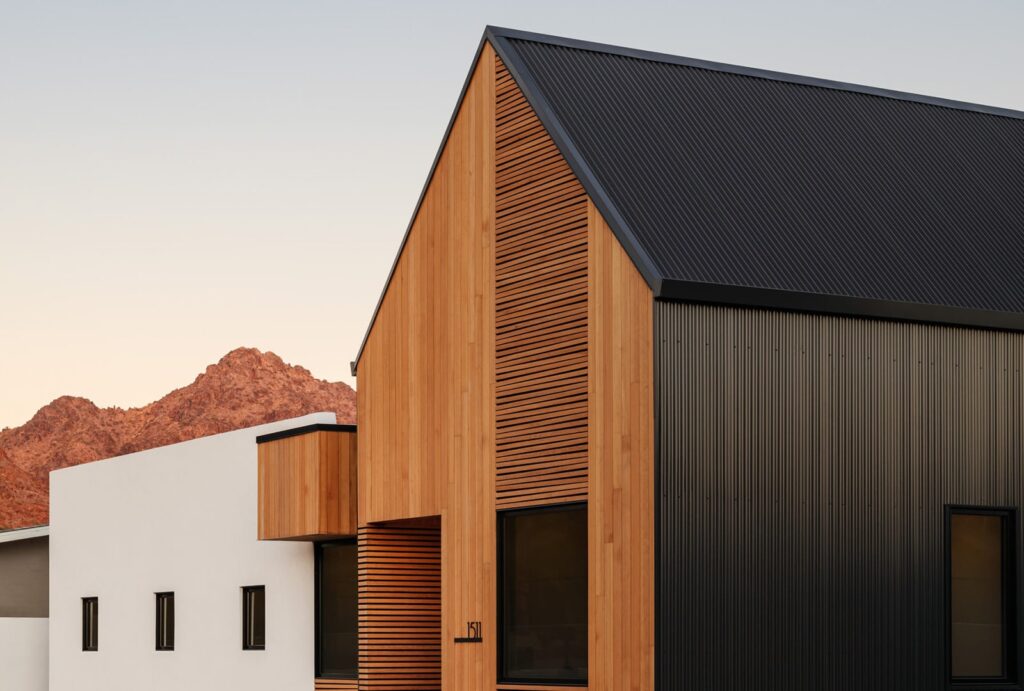
1. Choose the Right Material
Selecting the appropriate material for your home is crucial. Consider your home’s location, climate, and the look you want to achieve. Steel and aluminum are great options for durability and affordability, while copper offers a unique and luxurious touch.
2. Consider Your Budget
While metal siding is a long-term investment, it’s essential to consider your budget. Compare prices between different materials and suppliers to ensure you’re getting the best value. Keep in mind that high-quality metal siding can be more expensive upfront, but the longevity and low maintenance can save you money in the long run.
3. Find a Trusted Supplier
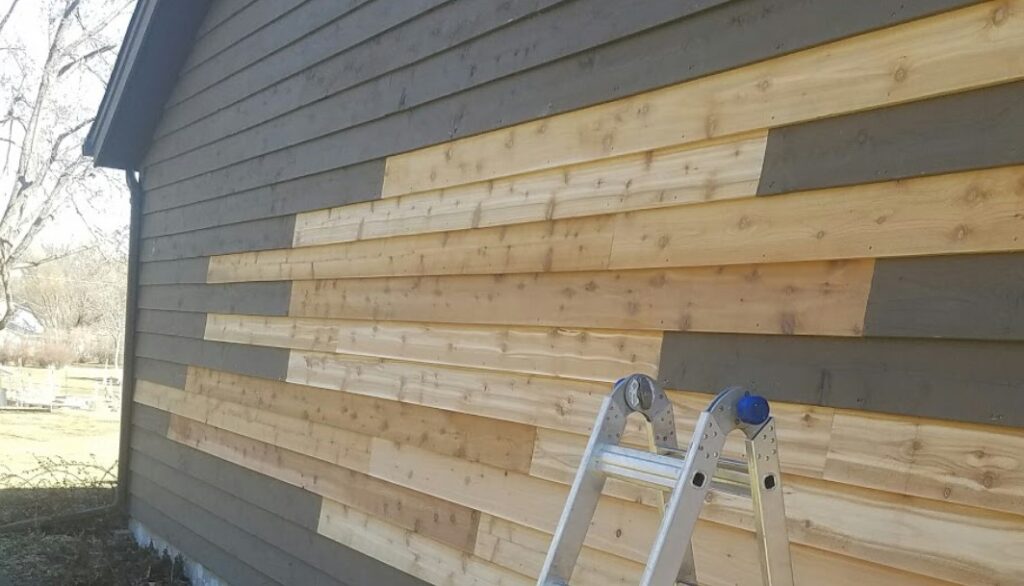
Make sure to buy your metal siding from a trusted supplier or manufacturer. Research online reviews, ask for recommendations, and choose a company that offers solid warranties and customer service.
Frequently Asked Question
1. What is the lifespan of metal siding?
Metal siding can last anywhere from 30 to 50 years, depending on the material and maintenance. Steel and aluminum, in particular, are known for their durability and resistance to the elements.
2. How do I maintain metal siding?
Metal siding is relatively low-maintenance, but it’s important to clean it regularly to prevent dirt buildup. For steel or aluminum siding, occasional touch-ups may be needed to prevent rust. Copper siding, though requiring minimal maintenance, will gradually develop a patina that many homeowners appreciate for its aesthetic appeal.
3. Is metal siding energy efficient?
Yes, metal siding can significantly improve energy efficiency. It reflects heat in the summer, keeping your home cooler, and serves as an insulating barrier to help maintain consistent indoor temperatures.
With the right knowledge, selecting metal siding for your modern home can be a straightforward and rewarding process. Whether you prioritize durability, energy efficiency, or aesthetic appeal, metal siding offers a wide range of benefits that will enhance the look and longevity of your home’s exterior.
